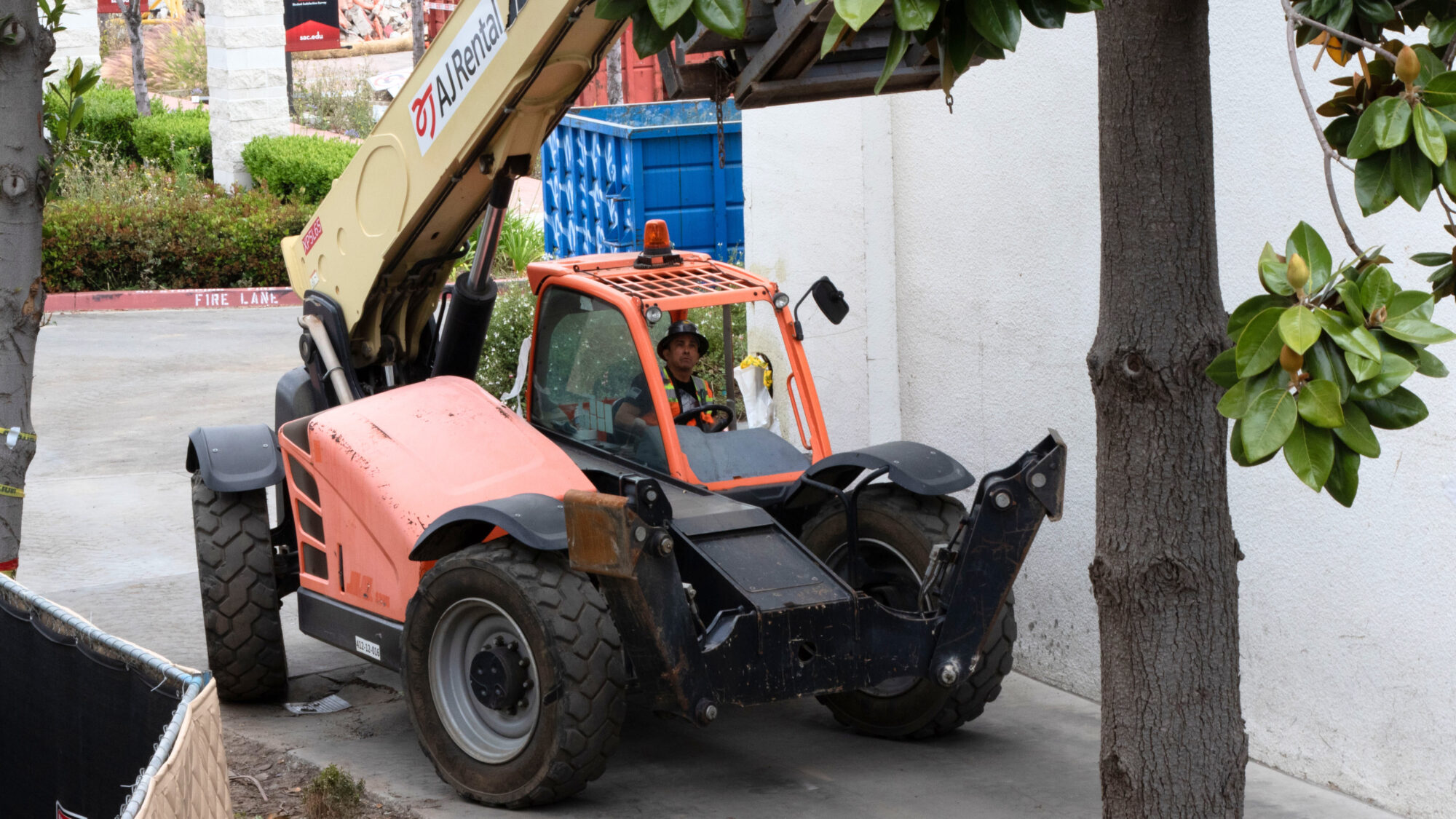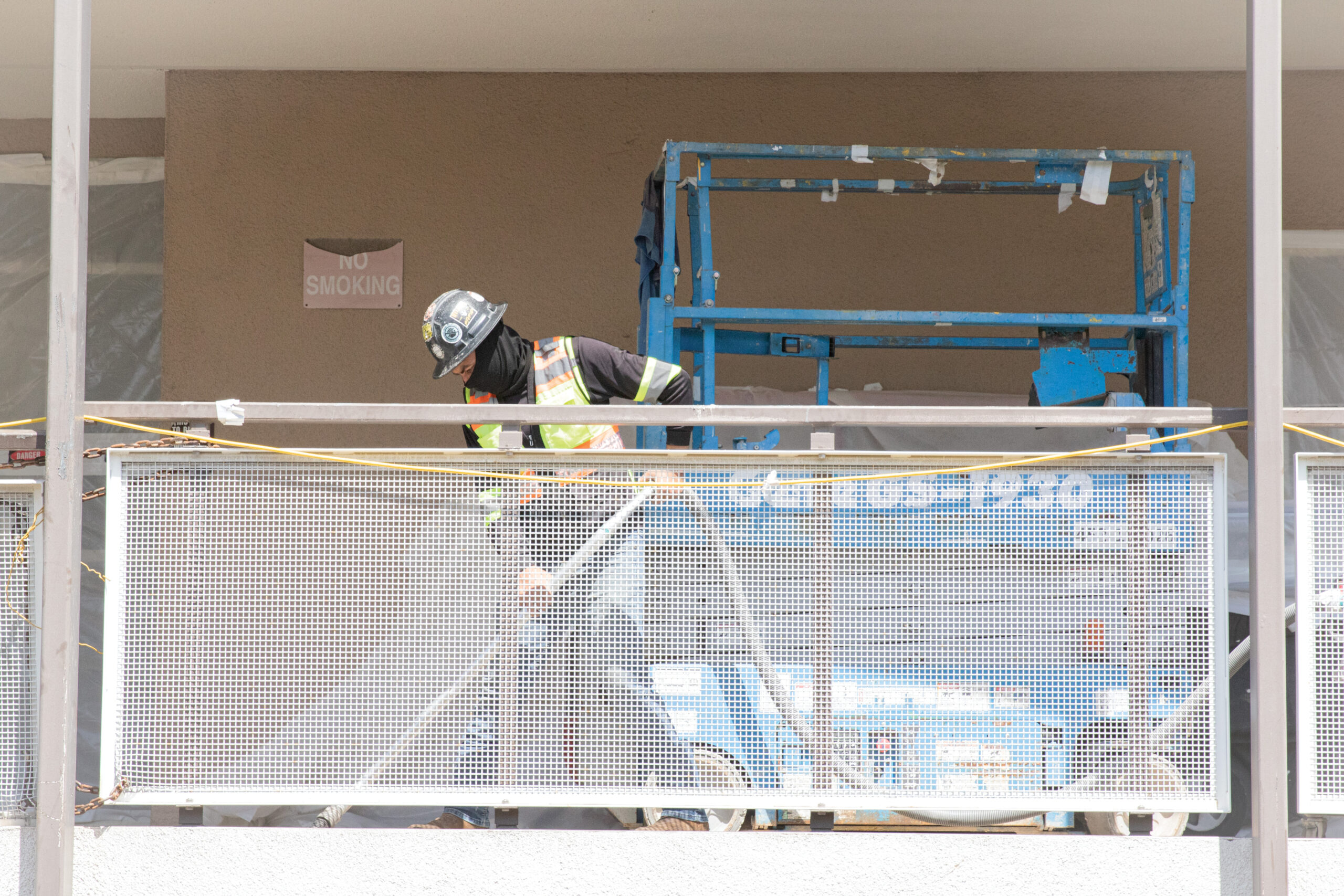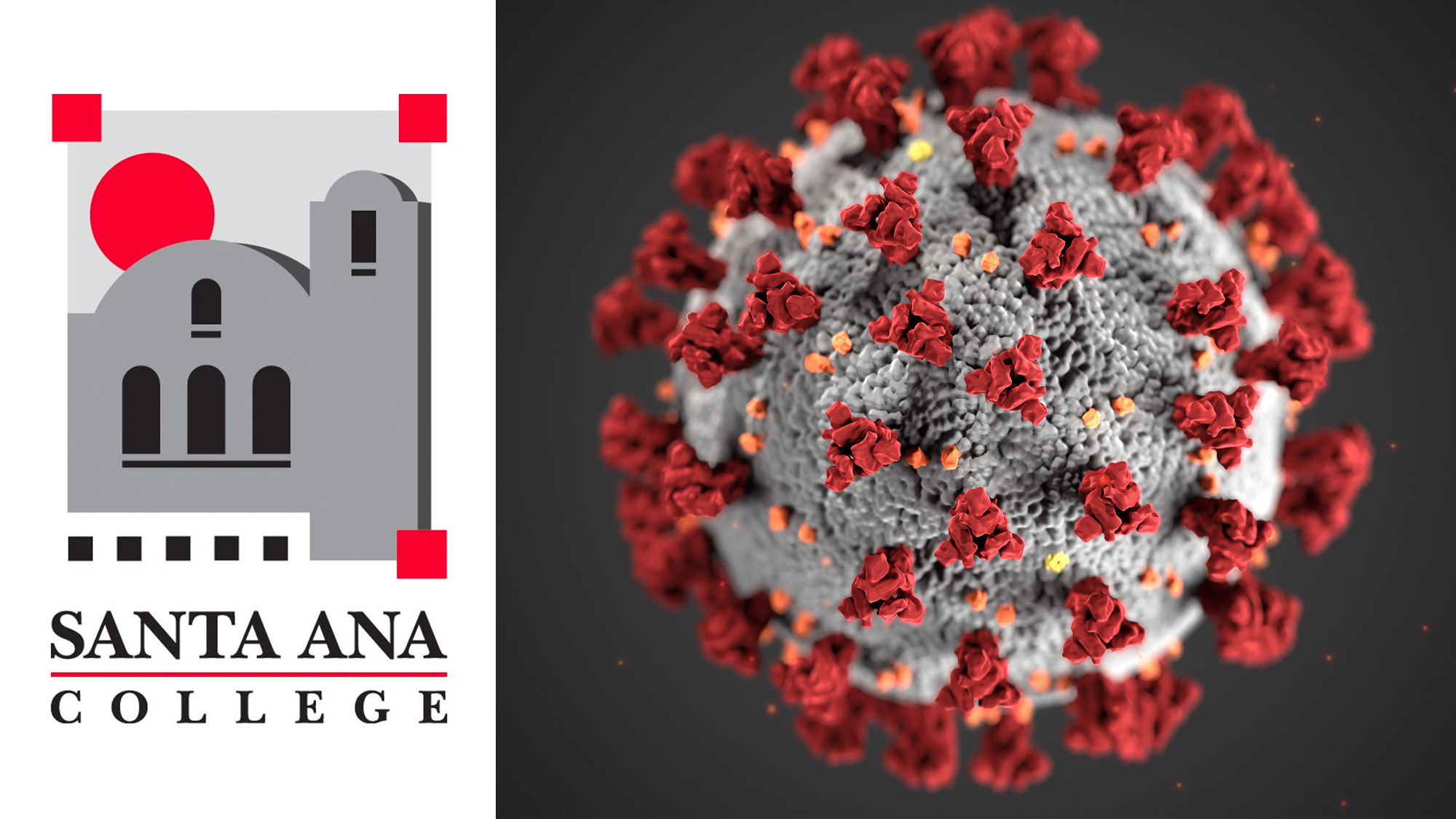Story by Jakki Padilla and Sophia Cortez
Crews are removing hazardous materials from Russell Hall as part of the $2.5-million demolition project that will make way for a new campus entrance.
In accordance with demolition regulations, warning signs are taped onto exterior walls, windows, and other blocked-off areas where known carcinogens are present. The messages state that asbestos is active in the area, along with warnings for workers to wear masks and protective clothing.
Officials say that students walking near the building do not need to fear inhaling the chemicals. “The abatement area is under containment from the exterior non-abatement areas using plastic sheeting and plywood, which is required,” said Carri Matsumoto, assistant vice chancellor of facility planning, district construction and support services.
Exposure to asbestos, a naturally occurring group of minerals, is known to cause lung damage, disabilities, and even death. Due to the mineral’s heat and corrosion-resistant fibers, it was commonly used in structures and building materials from the 1940s to 1970s.

When the Russell Hall demolition started at the beginning of the semester, the district hired CES Environmental Consultants, Inc. to conduct a search to find and remove asbestos and lead before initiating the tear-down.
During the recent hazardous material removal activities, the company found “additional unforeseen concealed hazardous materials” and asked the district to approve a $58,500 increase to continue the demolition. The board of trustees approved the increase on April 29, which raised the total cost of the hazardous materials abatement to about $100,000.
The Russell Hall demolition project is funded by Measure Q, Capital Facilities Funds, and other state funding.
“The [additional] asbestos-containing material is in the fireproofing that is sprayed onto the structural beams which are located above the ceiling tiles in inaccessible areas of the building,” Matsumoto said.
Asbestos is only cancerous if the fibers are exposed or frayed and become airborne. If inhaled, it enters the lungs and body possibly causing serious diseases including lung cancer, according to the Centers for Disease Control.
Air samples are collected outside the building to ensure compliance with environmental regulations.
- Here’s what’s inside el Don’s 2025 spring issue - May 28, 2025
- Ash’s Opinions – Column – ACP Entry - May 22, 2025
- Nico’s Film Notes – 1G Column – ACP Entry - May 22, 2025











